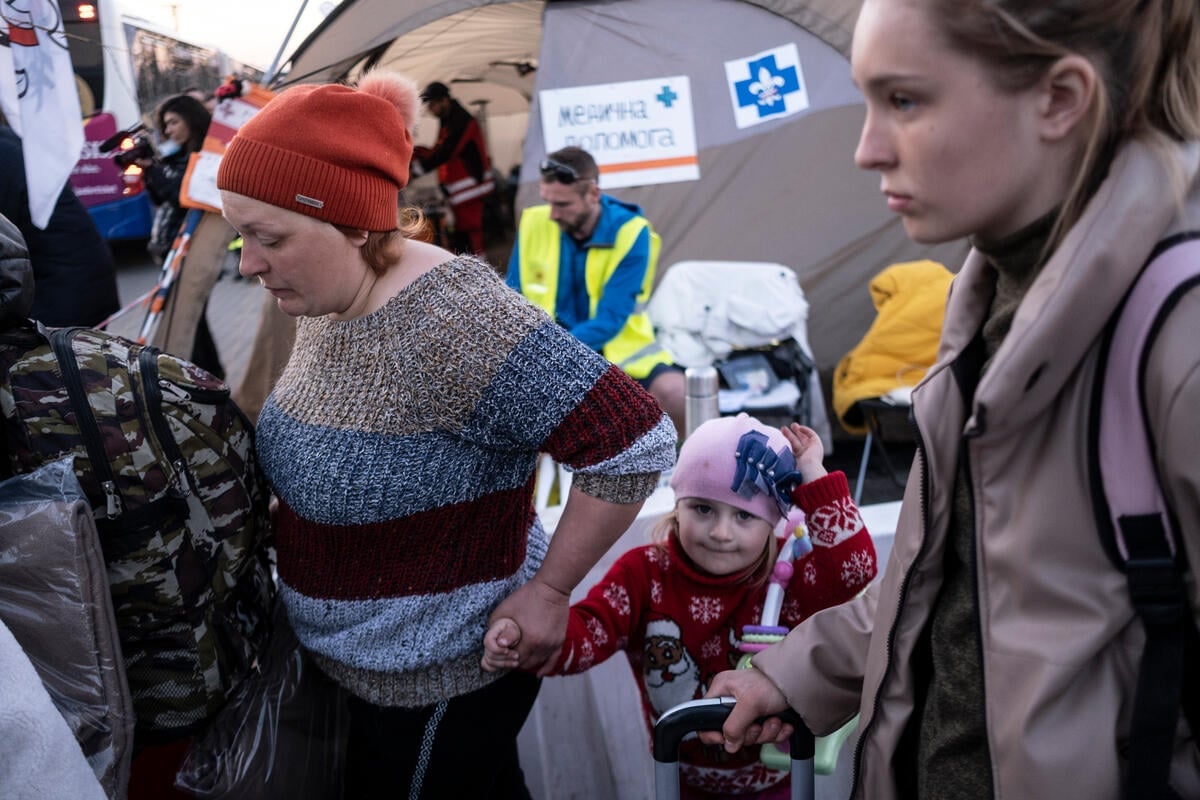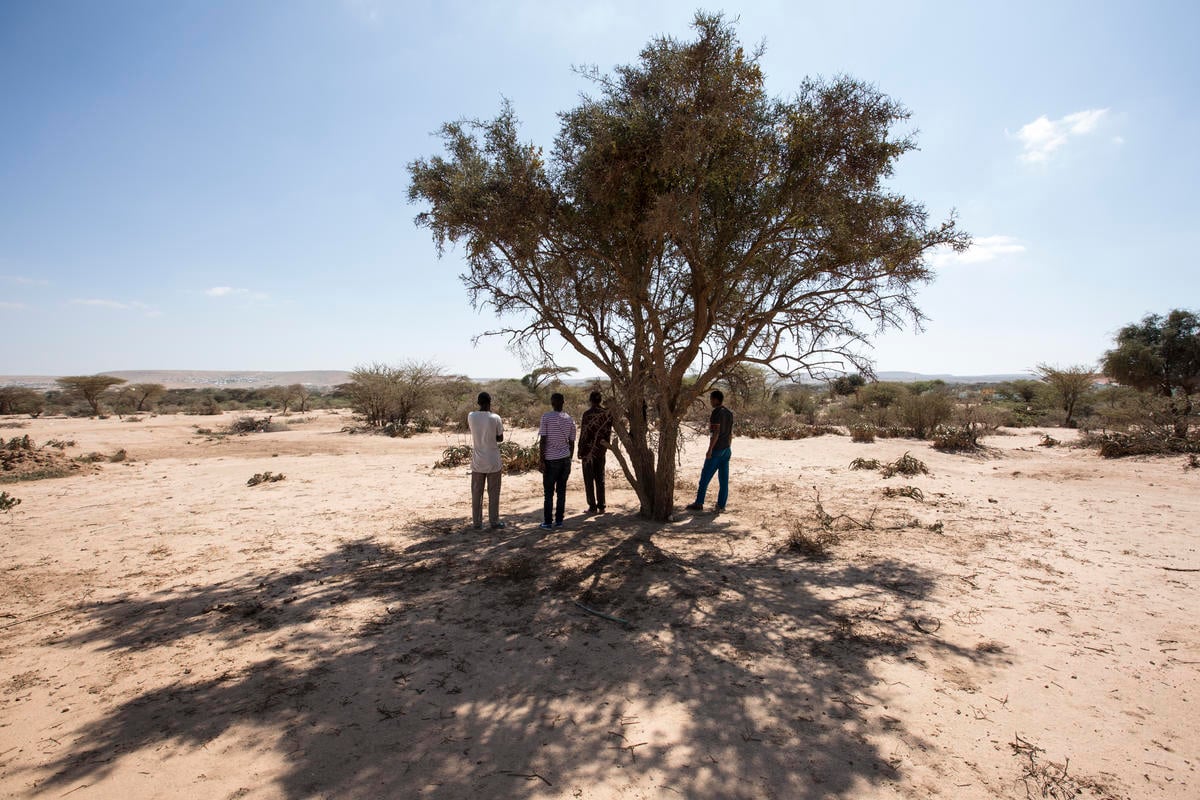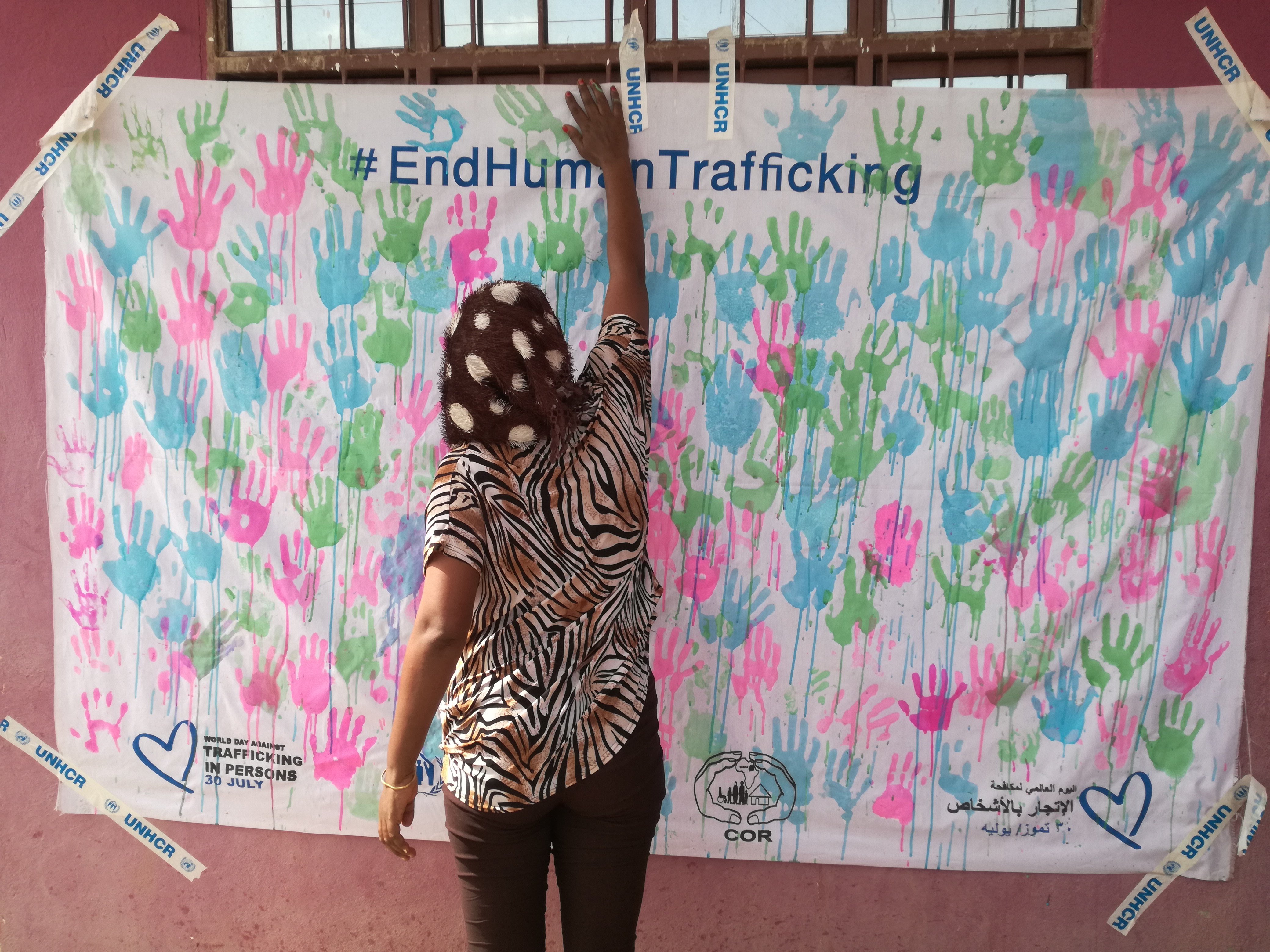Trafficking in persons
Trafficking in persons

Human trafficking takes place in every region of the world: Human beings are sold, bought and traded much like objects. Victims of trafficking end up in the hands of traffickers because they are being deceived, being forced or abducted.
Human trafficking and smuggling are two different crimes. However, the two are related and often intertwined.
Human trafficking is involuntary and victims are exploited, whereas smuggling is voluntary, yet still bears life-threatening risks. A smuggling case can become human trafficking if the victims are exploited, for example by being held for ransom, or to pay off a smuggling debt through forced labour or sex work.
Why refugees and other forcibly displaced people are at risk of being trafficked and smuggled
When people are forced to flee, they leave behind more than just their homes. Being away from their familiar surroundings, they often lose their community support networks and end up being socially and culturally isolated. They lack access to basic resources and livelihood opportunities. Depending on where they flee to, they may lack a regular status.
These and other factors contribute to making refugees and other forcibly displaced people an easy target for traffickers, who prey on the precariousness of their situation to exploit them.
Many persons fleeing conflict, violence or persecution are also compelled to move irregularly to seek protection. For this, they often resort to the services of smugglers. In these circumstances, refugees are particularly vulnerable to being trafficked or to falling victim to serious crimes and human rights’ violations.
How UNHCR is helping victims of human trafficking
While UNHCR does not have a specific mandate on supporting victims of trafficking and smuggling, it is recognized that victims or potential victims of smuggling with aggravating circumstances or trafficking may in some cases be persons of concern to UNHCR: refugees, asylum seekers, internally displaced or stateless persons. Victims of trafficking or those falling victim to serious crimes and human rights’ violations when being smuggled, may also have international protection needs and therefore qualify for refugee status. In these cases, UNHCR has the mandate to protect and find solutions for them.
To quickly identify victims of trafficking and refer them to UNHCR, partners and governments for assistance, it is crucial that those involved in working with people of concerns are:
- aware of the trafficking phenomenon and raising awareness among colleagues on the ground
- understanding the vulnerabilities that can put people at risk of becoming victims of trafficking
- understanding the regional or country specific context where trafficking can occur
Joint global initiatives to address human trafficking
UNHCR works in close partnership with several organizations – including UNODC, UNICEF, OHCHR, UNFPA, ILO and IOM – to develop joint global initiatives to address human trafficking at large.
In 2020, UNHCR and IOM published an updated Joint Framework on Developing Standard Operating Procedures for the Identification and Protection of Victims of Trafficking. The Framework has enhanced referrals and outlines the cooperation between the two agencies on trafficking in persons.
The IOM-UNHCR Framework document on developing standard operating procedures to facilitate the identification and protection of victims of trafficking (published in June 2020) can be found hereLink is external.
Among other initiatives, UNHCR co-leads the Task Team on Anti-Trafficking Global Protection Cluster together with IOM and the Heartland Alliance. The team is tasked with developing global guidance and capacity building on practical measures needed to address trafficking in persons in situations of internal displacement through the cluster response.
International and Regional Cooperation in the fight against human trafficking
The Inter-Agency Coordination Group against Trafficking (ICAT) is a policy forum mandated by the General Assembly to improve international cooperation and coherence in approaches to trafficking in persons. As an active member of the ICAT working group, UNHCR has contributed expertise to several policy papers and short issue briefs – such as the issue brief on Trafficking in Persons and Refugee Status. Other resources, including the ICAT Toolkit on Evaluating Counter Trafficking Programs can be found on the ICAT websiteLink is external.
Trafficking in persons is also addressed in the Global Compact on Refugees (GCR) and the Global Compact for Safe, Orderly and Regular Migration (GCM), committing to end trafficking in persons, improve identification, screening and referral of victims of trafficking to appropriate processes and procedures and victim support, including identification of those with international protection needs. As a member of the OSCE Alliance against Trafficking, UNHCR has played a key role in the design and facilitation of the OSCE Live Simulation training on Combatting Human Trafficking along Migration Routes.
UNHCR also participates in country-level coordination structures on mixed movements in several countries, using these forums as avenues for addressing trafficking in persons comprehensively through a multi-stakeholder approach.
Good practices
Following are a few examples of awareness-raising and collaboration in the fight against human trafficking and smuggling:
- 10-Point Plan in Action
The plan was developed in 2016 and contains good practice examples of measures used to identify and respond to trafficking in persons in mixed migration movement settings (see in particular chapter 5: Mechanisms for Screening and Referral and chapter 6: Differentiated Processes and Procedures). - Telling the Real Story
This initiativeLink is external aims to communicate with communities in their native languages about the dangers of onward irregular movement. By reaching out to people on the move through social media, community leaders, volunteers and diaspora, Telling the Real Story aims to combat misinformation about the journey towards Europe and inform people about other options available to them. - Collaboration in Sudan
In response to the Government of Sudan’s call for support to address the high incidence of kidnappings and trafficking in Sudan, UNHCR led the development of a joint multi-stakeholder and Government Strategy to address human trafficking, kidnappings and smuggling of Persons in Sudan. - Collaboration in Bangladesh
UNHCR and the International Organization for Migration are co-leading an Anti-Trafficking Working Group to map and analyze incidents of trafficking and to enhance coordination.
Further resources and documents
- Website of the United Nations: UN Convention against Transnational Organized Crime and the Protocols TheretoLink is external (external link)
- An Introductory Guide to Anti-Trafficking Action in Internal Displacement ContextsLink is external
- Protocol to prevent, suppress and punish trafficking in persons, especially women and children, supplementing the UN Convention Against Transnational Organized CrimeLink is external (PDF)
- Protocol against the smuggling of migrants by land, sea and air, supplementing the UN Convention Against Transnational Organized CrimeLink is external (PDF)
- ICAT Issue Brief 1 – What is the difference between trafficking in persons and smuggling of migrants?Link is external (PDF)
- UNHCR Guidelines on International Protection No. 7Link is external: The Application of Article 1A(2) of the 1951 Convention and/or 1967 Protocol Relating to the Status of Refugees to Victims of Trafficking and Persons At Risk of Being Trafficked
- IOM-UNHCR Framework document Link is externalon developing standard operating procedures to facilitate the identification and protection of victims of trafficking, June 2020
⇒ For more UNHCR's policy documents relevant to trafficking in persons and international protection, case law, selected international and regional legal instruments, as well as non-treaty instruments, tools and resources documents, visit the RefWorld websiteLink is external






